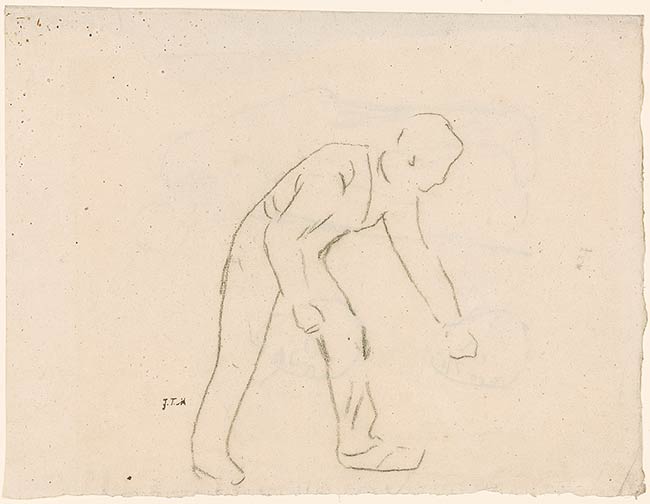

The broken outline found in this and other sheets by the artist reflects a late stage in the development of the artist's compositions. After carefully studying the nude figure, clothed figure, and details of drapery, Millet would distill the outline into a series of short, broken lines, repeatedly drawing the outline with slight changes until the silhouette was resolved to his satisfaction.
The man shown in a bent posture, hands positioned as if holding a shovel to dig, may be related to the artist's small print of "Two Men Turning over the Soil," 1855-56 (Delteil 13), which in turn gave rise to an unfinished painting from 1855 and a major pastel from 1866. Leading up to the print, Millet made several drawings of the figures, which appear in reverse in the etching.
The study on the verso, an outline of a man leaning on a staff, can be situated among Millet's work in the early 1850s when he began exploring the depiction of laborers. It loosely suggests the melancholic mood found in his ca. 1855 etching of a man leaning on a spade (Delteil 3).
Millet atelier stamps (Lugt 1460) in brown ink, on recto at left, and on verso at right, "J.F.M.".
Dennis, Seth, former owner.
Dennis, Gertrude W., former owner.
Ryskamp, Charles, ed. Twenty-First Report to the Fellows of the Pierpont Morgan Library, 1984-1986. New York : Pierpont Morgan Library, 1989, p. 361.
